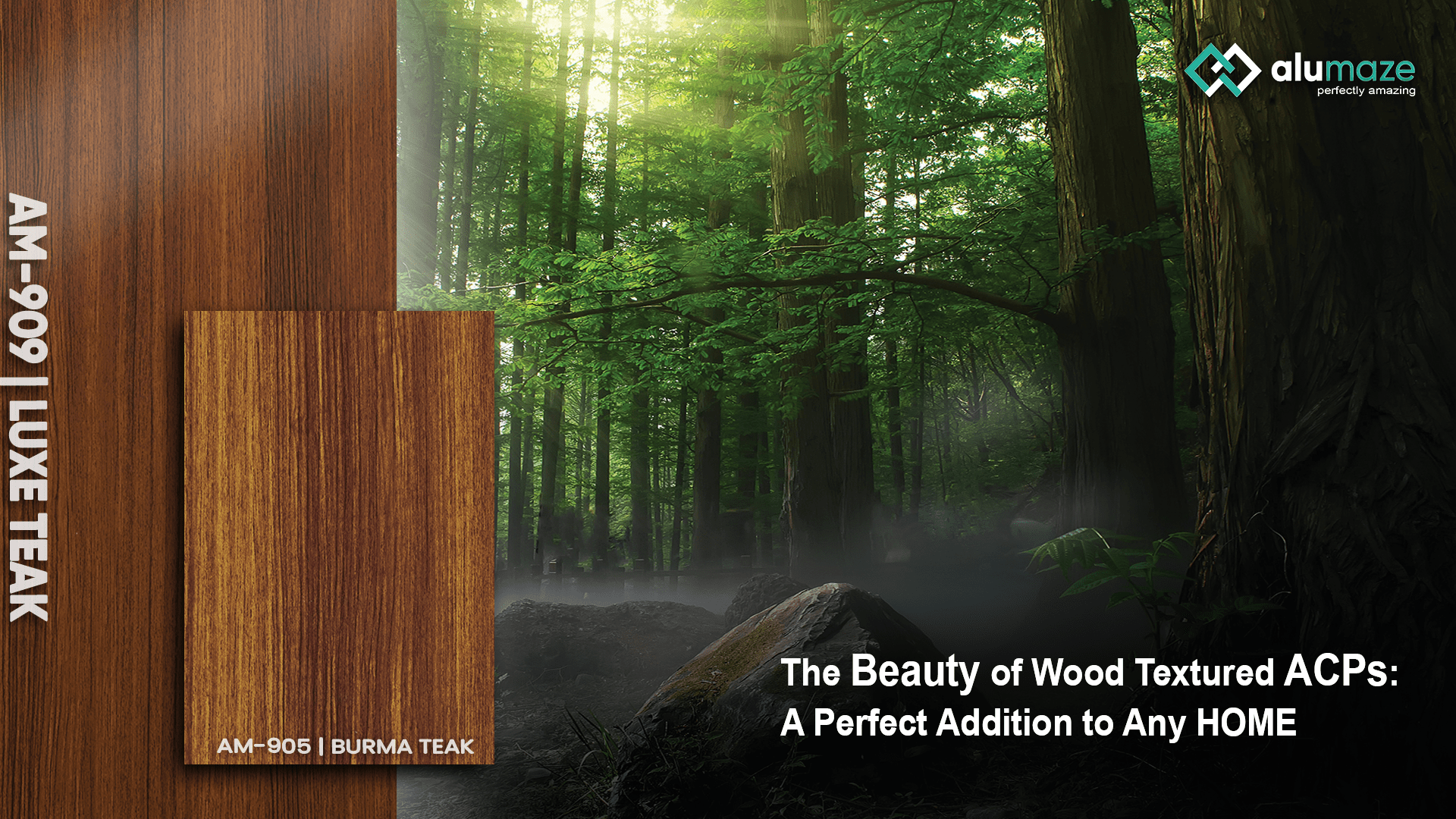Wood has long been a favorite material for home construction and interior design. Its warm and natural texture adds a touch of elegance and sophistication to any space. However, with the rising cost and maintenance concerns associated with natural wood, many homeowners are turning to alternatives, such as wooden ACP, to achieve the same aesthetic without the drawbacks.
ACP, or Aluminium Composite Panel, is a popular building material used for exterior and interior design. It comprises two thin aluminium sheets bonded to a non-aluminum core, which gives it durability, flexibility, and lightweight properties. ACPs come in various colours and textures, with wood being one of the most popular options.
The beauty of wood-textured ACPs lies in their ability to mimic the natural look and feel of real wood. With advanced digital printing technology, ACP manufacturers can create high-quality prints that closely resemble the patterns and grains of different wood species. This makes distinguishing between natural and wood-textured ACPs complex, even upon close inspection.
One of the main advantages of using wood-textured ACPs is their cost-effectiveness. Natural wood is an expensive material that requires regular maintenance, such as sanding, staining, and sealing, to keep it looking its best. On the other hand, ACPs are affordable, durable, and require minimal maintenance. They are also easy to install, saving time and labor costs during construction or renovation projects.
Aside from the cost, ACPs offer better protection against the elements than natural wood. They are weather and UV-resistant, making them suitable for indoor and outdoor applications. They also do not rot, warp, or fade and are not susceptible to pest infestations, making them a more practical choice for areas with extreme weather conditions.
Another advantage of wood-textured ACPs is their versatility in design. They come in a wide range of colors, patterns, and finishes, allowing homeowners and designers to choose the one that best suits their style and vision. Whether it’s a classic oak, rustic cedar, or modern walnut, there is a wood-textured ACP design for every taste and preference.
In terms of functionality, wood-textured ACPs offer excellent insulation and soundproofing properties. The non-aluminum core of ACPs acts as a barrier to heat and noise, making them ideal for homes in noisy and high-temperature areas. This can reduce energy costs and create a more comfortable living environment for homeowners.
Wooden ACP are not just limited to exterior cladding or facades. They can also be used for interior applications like wall cladding, ceilings, and furniture. This allows for a cohesive design throughout the home, tying together the aesthetic of outdoor and indoor spaces.
Conclusion
Wood-textured ACPs are a perfect addition to any home, providing the warmth and beauty of natural wood without cost and maintenance concerns. Their durability, affordability, and versatile design options make them a practical choice for homeowners and designers looking to create a stylish and functional living space. So, if you’re planning to give your home a makeover, consider using wood-textured ACPs and bring the beauty of nature into your living space.


